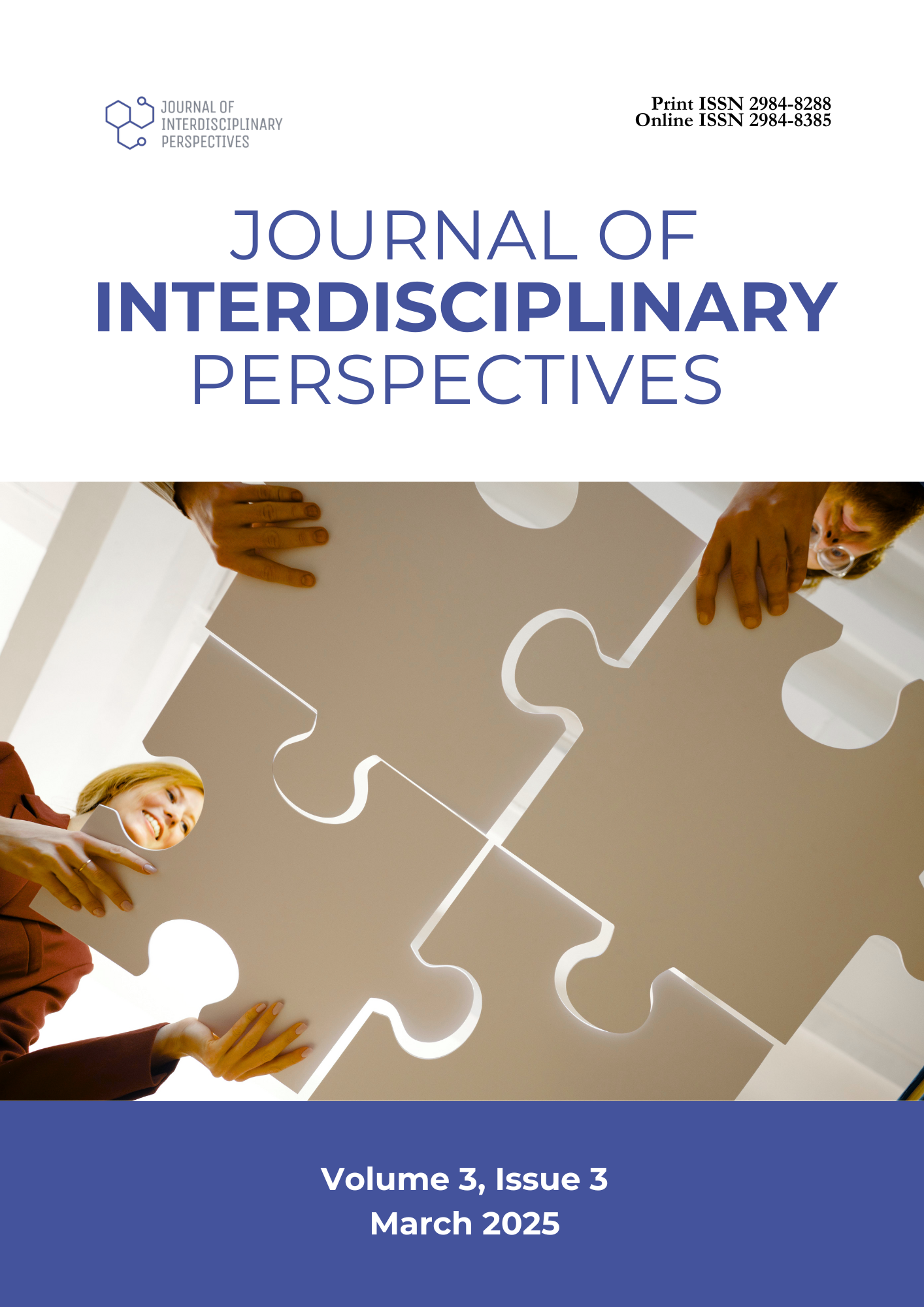Enhancing Commuter Accessibility in Tacloban’s University Belt, Philippines
DOI:
https://doi.org/10.69569/jip.2024.0604Keywords:
Accessibility, Traffic congestion, Transportation ecosystem, University belt area, Tacloban CityAbstract
Public transportation is critical in supporting urban mobility, providing economic benefits, and reducing environmental impacts. However, Tacloban City, particularly its University Belt Area, faces significant transportation challenges, including traffic congestion, inadequate infrastructure, and accessibility disparities among transit stops. While many studies broadly explore urban transportation systems, this research distinguishes itself by addressing accessibility within a localized context, combining commuter perceptions with traditional metrics. By focusing on Tacloban City’s University Belt Area, this study fills a gap in understanding transit accessibility in densely populated, commuter-reliant urban areas. This research evaluates six transit stops—TS-1 (LNU), TS-2 (LNHS), TS-3 (EVSU), TS-4 (Card Bank), TS-5 (LBC), and TS-6 (LVD)—through data collection from 599 respondents and 10 days of traffic volume counts. Using Geographic Information System (GIS) heatmaps and statistical tools like Spearman's Correlation, ANOVA-Kruskal Wallis, and Dunn's Test, the study identifies patterns and variations in accessibility during peak and off-peak hours. Findings reveal that 83% of commuters experience waiting times of 10–20 minutes during peak hours at underperforming stops like TS-5, compared to 5–10 minutes at high-performing stops like TS-2 and TS-3. Additionally, 60% of TS-5 users report travel times exceeding 5 minutes, unlike other stops where travel times are predominantly within 0–5 minutes. Recommendations include increasing public transport availability, optimizing schedules, and enhancing pedestrian pathways and transit facilities. The findings provide actionable insights for policymakers to prioritize investments and design equitable urban transportation solutions, contributing to a more sustainable and accessible transportation system for Tacloban City and serving as a framework for addressing similar challenges in other urban areas.
Downloads
References
Albacete, X., Olaru, D., Paül, V., & Biermann, S. (2015). Measuring the accessibility of public transport: A critical comparison between methods in Helsinki. Applied Spatial Analysis and Policy, 10(2), 161–188. https://doi.org/10.1007/s12061-015-9177-8
Almeda, J., Capistrano, G., & Sarte, G. M. (2010). Elementary statistics. The University of the Philippines Press.
Asael. (2023). Exploring the main modes of transportation in the Philippines - Secret Philippines. Secret Philippines. Retrieved from https://tinyurl.com/mrwzpr6a
Bruno Jardim, M., de Castro Neto, A., & Barriguinha, A. (2023). A street-point method to measure the spatiotemporal relationship between walkability and pedestrian flow. Computers, Environment and Urban Systems, 104, 101993. https://doi.org/10.1016/j.compenvurbsys.2023.101993
Chelcie, N., & Teknomo, K. (2016). A study of Metro Manila’s public transportation sector: Implementing a multimodal public transportation route planner. Asian Transport Studies, 4(2), 460–477. https://doi.org/10.11175/eastsats.4.460
Dmitry, R., Marusina, I., Shemyakin, A., Alexeevsky, M., & Malchikov, V. (2022). The relevance of the use of electric buses at motor transport enterprises for intracity passenger routes. 2022 International Conference on Engineering Management of Communication and Technology (EMCTECH), 1-5. https://doi.org/10.1109/EMCTECH55220.2022.9934070
Teodorović, D., & Janić, M. (2022). Public transportation systems. In Transportation Engineering (pp. 405–522). Elsevier. https://doi.org/10.1016/B978-0-323-90813-9.00007-2
Ellen, S. (2020). Slovin’s formula sampling techniques. Retrieved from https://sciencing.com/slovins-formula-sampling-techniques-5475547.html
Gače, I., Vdović, H., Babić, J., & Podobnik, V. (2023). An eco-aware framework for AI-based analysis of contextually enriched automotive trip data. Energy Sources, Part A: Recovery, Utilization, and Environmental Effects, 45(1), 1274–1292. https://doi.org/10.1080/15567036.2023.2167020
Gebremariam, D., Kuhilen, T., Seboka, H., & Grum, B. (2024). Effect of sidewalk design and obstructions on pedestrian mobility: A case study of the main streets of Mekelle City, Northern Ethiopia. Advances in Civil Engineering, 2024, 5672280. https://doi.org/10.1155/2024/567228
Kelli Silver, Lopes, A., Vale, D., & Marques da Costa, N. (2023). The inequality effects of public transport fare: The case of Lisbon's fare reform. Journal of Transport Geography, 112. https://doi.org/10.1016/j.jtrangeo.2023.103685
Li, H., Sun, Y., & Du, L. (2022). Study on urban traffic mode and new type of bridge tunnel based on the concept of environmental protection. CRC Press EBooks, 680–684. https://doi.org/10.1201/9781003305002-89
Limos, M. (2022). What are the disadvantages of using private cars? Retrieved from https://tinyurl.com/42x63rph
Matowicki, M., Pecherkova, P., Amorim, M., Kern, M., Motzer, N., & Pribyl, O. (2024). Complementing or competing with public transit? Evaluating the parameter sensitivity of potential Mobility-as-a-Service (MaaS) urban users in Germany, the Czech Republic, Poland, and the United Kingdom with a mixed choice model. Transportation, 2024. https://doi.org/10.1007/s11116-024-10501-9
Merlin, L. A., & Jehle, U. (2023). Global interest in walking accessibility: A scoping review. Transport Reviews, 43(5), 1021–1054. https://doi.org/10.1080/01441647.2023.2189323 Mohammed, A., Al-Saudi, A., & Al-Marri, M. (2023). Area-specific traffic peak hour timing using traffic signal detectors: A case study of Qatar. Retrieved from
https://doi.org/10.29117/cic.2023.0129
AlKheder, S., Abdullah, W., & Al Sayegh, H. (2022). GIS-based employment availabilities by mode of transport in Kuwait. Applied Geomatics, 14(1), 1–15. https://doi.org/10.1007/s12518- 021-00406-y
Tong, L., Zhou, X., & Miller, H. J. (2015). Transportation network design for maximizing space–time accessibility. Transportation Research Part B: Methodological, 81(2), 555–576. https://doi.org/10.1016/j.trb.2015.08.002
Useche, S., Marín Palacios, C., & Llamazares, J. (2023). "Another (hard) day moving in the city": Development and validation of the MCSS, a multimodal commuting stress scale.
Transportation Research Part F: Traffic Psychology and Behaviour, 95, 143–159. https://doi.org/10.1016/j.trf.2023.04.005
Watthanaklang, D., Jomnonkwao, S., Champahom, T., & Wisutwattanasak, P. (2024). Exploring accessibility and service quality perceptions on local public transportation in Thailand. Case Studies on Transport Policy, 15, 101144. https://doi.org/10.1016/j.cstp.2023.101144
Zimmermann, S., Schulz, T., Hein, A., Gewald, H., & Krcmar, H. (2023). Motivating change in commuters’ mobility behaviour: Digital nudging for public transportation use. Journal of Decision Systems, 1–27. https://doi.org/10.1080/12460125.2023.2198056
Downloads
Published
How to Cite
Issue
Section
License
Copyright (c) 2025 Journal of Interdisciplinary Perspectives

This work is licensed under a Creative Commons Attribution-NonCommercial 4.0 International License.








